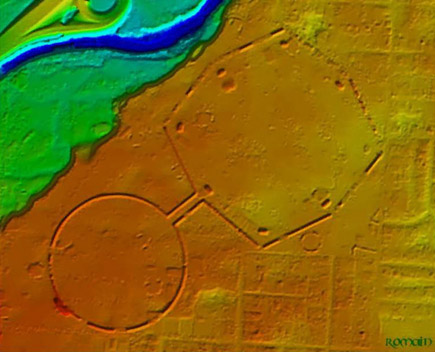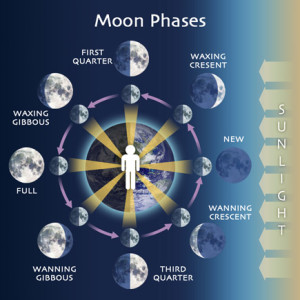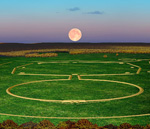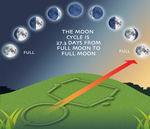
The Octagon Earthwork is thought to be the only earthen lunar (moon) calendar in the world!
This image of the Octagon Mound was taken with a remote sensing technique called LIDAR. The Octagon Earthwork was built 2,000 years ago. The two main shapes that make up the earthwork include an octagon and a circle. They are joined together by two earthen walls. The octagon part is aligned to 4 moonrises and 4 moonsets.
When a planet or moon turns all the way around on its axis this is called a rotation. The earth rotates once every 24 hours (a day). The moon rotates once every 27-29 days. So the marking of the 4 moonrises and moonsets marks 27-29 days. It takes approximately one year (365 days, 5 hours, 49 minute and 1.20 seconds) for the Earth to rotate around the Sun. If you could watch and chart where the moon rises every day or evening, you will quickly realize that it rises in a different place. It will take you 18.6 years to chart the full cycle of where the moon rises. The Octagon Earthwork marks this 18.6 year cycle.

Scientists have asked for years, how did the Earthworks Builders know this? How did they build the earthwork to accurately align and document this cycle? We do know that some tribes kept their calendar according to the moons rotation. Their calendar included 13 cycles of the moon, each cycle lasting approximately 28 days. In the 13-moon system, every moon is equal in length, the moon phases follow a pattern and the calendar is perpetual.
We’ve developed a game that allows you to virtually see the Earthworks and see for yourself how they interact with the lunar cycles.
See the moon phases in the Catch the Moon Game












 Earthworks Builders used the moon for direction and to navigate.
Earthworks Builders used the moon for direction and to navigate.








